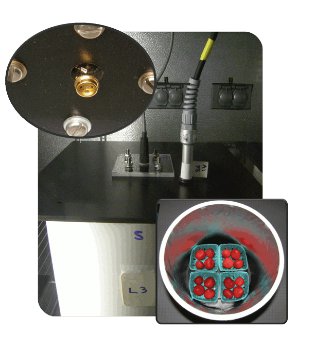
Sensor Electronic Technology Inc reports that LEDs in the UVB spectral band can double the shelf life of refrigerated produce after a study based on strawberries that was conducted with the USDA.
Sensor Electronic Technology Inc (SETi) has announced the results of a three-year research program, conducted with the US Department of Agriculture (USDA), that prove ultraviolet (UV) LED lighting is an effective technique in extending the shelf life of produce. Strawberries in a refrigerator that were continuously lit with LEDs in the 280–315-nm UVB wavelength range exhibited no mold or decay after nine days.
SETi believes the research will lead to a fundamental change in the consumer appliance business. "Findings of this exciting program are expected to have a major impact on the appliance business to extend the shelf life and preserve nutritional value of the fresh produce," said Remis Gaska, president and CEO of SETi.
UV LEDs are an especially good match to the application inside refrigerators, according to SETi. Because LEDs can be turned on and off instantly, appliance makers could design a refrigerator in which the UV lighting is turned on only when the door is closed. Moreover, the LEDs generate little heat and in fact operate more efficiently in the cool environment.
In addition, the energy efficiency of LEDs means that a refrigerator equipped with such lighting would use little additional energy. The research project used only 20 mW/m2 of radiometric power. Gaska added, "We look forward to the prospect of UV LEDs in residential refrigerators impacting on everyday life and reducing waste through spoilage."
Strawberry study
In the just completed study, the researchers placed eight tubs of strawberries in a chiller cabinet set to 5.4°C (41.72°F) and humidity between 94–98%. Two tubs were left in the dark. In the other six tubs, the team mounted a single LED in the top cover of each tub — testing LEDs over different wavelengths and power levels.
Strawberries in the unlit tubs exhibited mold and decay after three to four days. Strawberries lit with UVC (100–280-nm) LEDs were mold free after nine days but showed some sign of decay. The fruit lit with UVB LEDs was mold and decay free after nine days.
The research team also measured characteristics such as weight, soluble solid, titratable acidity, and anthocyanin levels throughout the course of the experiment. The team found "no significant change in the strawberry composition" in the case of the UVB-lit berries.
The USDA had previously documented that UV light could increase phenolic compounds during the growth of lettuce, and that UV light had a positive impact on post-harvest lettuce. About the new study, Steven Britz, research plant physiologist with the Agricultural Research Service of the USDA, said, "We are exploring the possibility that the UV effect involves the induction of defense mechanisms in the fruit itself in addition to inhibition of mold growth, since evidence indicates parts of the UV spectrum retard decay."





 CN
TW
EN
CN
TW
EN






